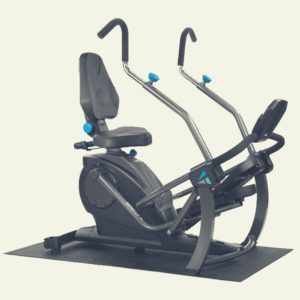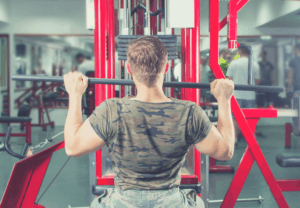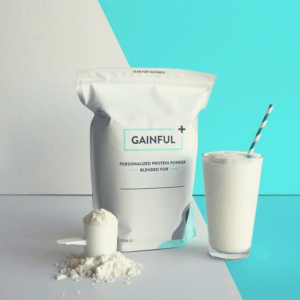If you are in a hurry and just want to find out what the best stepping machine for seniors is, then we recommend Teeter FreeStep LT3 Recumbent Cross Trainer as the best one.
If you’re looking for the best stepping machine for seniors, you’re going to have to look beyond the tiny, pedal-only machines that take up no space and barely have handles.
Those steppers are great, especially for small spaces, but they aren’t necessarily safe for seniors. There are some stepping machines that are, though.
Here are the top stepping machine for seniors:
- HCI Fitness Physio Step HXT
- Sunny Health and Fitness SF-RB4708
- TreadLife Fitness Strider 1
- HCI Fitness Physiotrainer CXT
- Teeter FreeStep LT3 Recumbent Cross Trainer
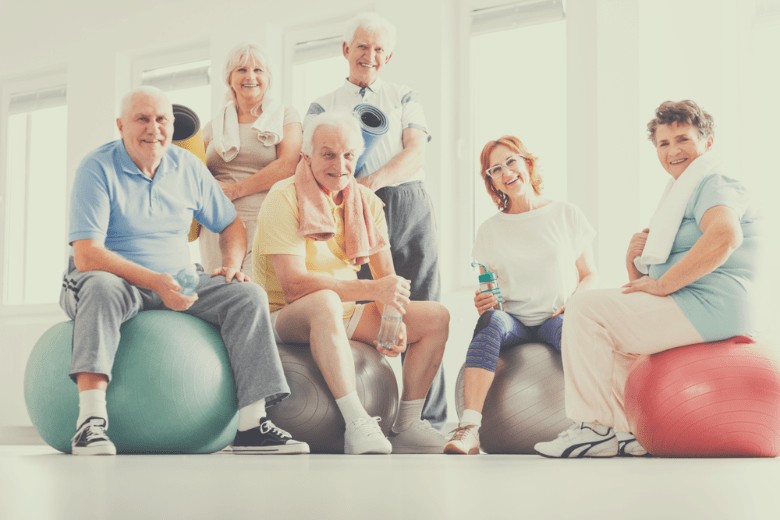
Stepping Machines by Type
Mini Steppers
There are several types of stepping machines. The most inexpensive and budget-friendly are mini steppers. They’re super small and usually contain nothing more than pedals.
Occasionally they’ll have handles, but more often, they have only resistance bands or no handles at all.
They’re used to burn calories, tone the lower body and improve cardiovascular health.
Stair Steppers/Stair Climbers
Next up are stair steppers/climbers.
Largely, they’re the same; different companies sometimes prefer one name over the other, although sometimes machines marketed as “climbers” are a little larger than steppers.
They’re constructed similarly to mini steppers but are bigger and usually have handles, handrails or at least resistance bands.
They, too, are relatively small and advantageous for people on tight budgets.
Stepmills
Another, larger type of stepping machine known as a stepmill is a combination step machine and treadmill.
Basically,it’s a treadmill with steps. The most well-known brand is probably the StairMaster. These work like treadmills, moving at a set pace that forces users to keep up.
The difference is that users aren’t walking on a flat or slightly inclined surface. They’re actually climbing steps.
None of these options are great for seniors because they require users to have excellent balance and be in fairly good shape to use them safely.
Elliptical Cross Trainers/Semi-Ellipticals
The best stepping machine for seniors is the semi-elliptical or elliptical cross trainer, which is different than a standard elliptical.
Many of these allow users to sit, eliminating the need for perfect balance, and provide them with extremely low-impact workouts, which is good for seniors who may have bad joints.
Benefits for Seniors
There are a ton of great benefits that can be gained, particularly for seniors, from using semi-ellipticals/cross trainers.
Safe, Low-Impact, Full-Body Workout
Seniors need to exercise just like everyone else, but as people age, their bodies don’t work like they did when they were young.
That’s why seniors need low-impact workout routines that are easy on their bones and joints. Ellipticals, even semi-ellipticals, are great for that.
The five machines below are all sit-down models, and that’s also important because seniors may not have great balance or coordination.
Furthermore, seniors can work their entire bodies, upper and lower, with this one machine.
It’s an all-in-one, total body workout in one convenient, easy-to-use and low-impact machine.
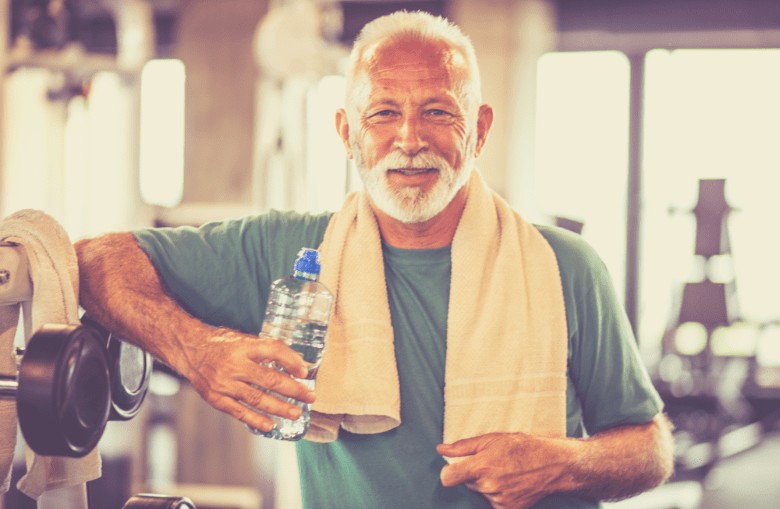
Burn Calories/Aid in Weight Loss
Because semi-ellipticals can really get the arms and legs moving, the blood pumping and the heart racing, they’re actually great for burning calories and losing weight.
It’s a true workout that’s comparable to, or maybe even a little more effective than, a brisk walk on a treadmill.
Great for Cardiovascular Health/Endurance
Steady walking, cycling, pedaling or stepping are all types of aerobic exercise, and steady aerobic exercise is the best way to build stamina and endurance.
It’s also the best form of cardio.
Doing these kinds of aerobic exercises, which are really just low-impact alternatives to walking, just 30 minutes a day can strengthen the heart and bring about all kinds of health improvements.
Can Prevent Muscle Loss/Help Build Muscles
Exercise helps keep the body in shape.
As we age, we do less and begin losing our muscle mass. However, we can help decrease the amount of muscle mass we lose by exercising regularly on machines like these.
If we do enough, it could even lead to some toning of the muscles we’ve already begun to lose, especially in the hips and legs.
Can Improve Balance/Mobility
This directly correlates with retaining and regaining muscle mass.
The stronger a person is, the more stable he is. If seniors work out every day, they’ll become more fit and healthy and less prone to accidents, falls or losing their balance.
Are There Downsides?
There are definitely disadvantages to seniors trying to use “regular” stepping machines. With these sit-down, semi-elliptical stepping machines, though, there are very few.
Seniors may be a little sore when they first start using them, but that’s natural. The only real disadvantages are that they take up quite a bit of space and can be expensive.
If someone has the available space and money, though, they’re pretty much disadvantage-free.
Things to Consider
Here are the main things to consider when looking for the best stepping machine for a senior in your life:
- Price vs. Performance (The Overall Value)
- Safety Features
- Comfort
- Extra Features
- Available Warranty
- Size
Best Stepping Machines for Seniors
HCI Fitness Physio Step HXT
HCI Fitness Physio Step HXT is an expensive machine.
It’s also rather large, measuring 51.97″ x 25″ x 50.98″ and weighing 165 pounds. It’s extremely easy to use, though, and it can hold users up to 330 pounds and between 4’9″ and 6’1″.
The low-entry seat makes it very easy to get into and out of, and there are 16 different resistance levels for a wide variety of needs.
The arms are fully adjustable and movable, but there are also stationary handles beside the seat that monitor heart rate.
The LCD screen is large, easy to read and gives the user all kinds of feedback.
The pedal motion is only semi-elliptical, though, meaning it’s more circular than linear, which isn’t quite as easy on the knees. Also, there’s no tablet rack.
Pros:
- 16 levels of resistance.
- Arms are fully adjustable for the most comfortable workout.
- Extremely comfortable seat.
- Has foot straps for safety.
- Has extra-long back rest for maximum comfort.
Cons:
- Expensive.
- Circular pedaling motion isn’t as low-impact as linear.
- No tablet rack.
- Large and heavy, which makes assembly cumbersome.
Sunny Health and Fitness SF-RB4708
Although the Sunny Health and Fitness SF-RB4708 also takes up a lot of space, it’s a much more affordable option. The downside is that it’s more of a stationary bike than a stepping machine/cross trainer.
The pedaling motion isn’t ideal for those looking for the low-impact, easy stride of an elliptical.
It has eight levels of magnetic resistance, and the movable handlebars allow users to work their upper- and lower-bodies at once.
There’s also a pulse reader in the handlebars. In addition to an easy-to-read monitor, the machine also comes with a tablet holder for entertainment.
The extra-long backrest is nice, but the adjustable seat isn’t super comfortable.
Pros:
- Affordable.
- Holds users up to 350 pounds.
- Extra-long backrest, pedal straps and tablet holder are nice additions.
- Has wheels for easy portability.
Cons:
- More of a bike than a stepping machine.
- Uncomfortable seat.
- Handlebars aren’t adjustable.
- Takes up a lot of space.
- Pedal motion isn’t great for seniors’ knees.
TreadLife Fitness Strider 1
Although pricey, TreadLife Fitness Strider 1 is a nice machine and is one of the few options we found with a linear-style stride as opposed to circular, so it’s much easier on the knees.
It has 16 resistance levels and is very quiet while in use. It has an easy-to-use monitor, but the display is small, which is somewhat of a nuisance.
The seat is comfortable, and the arms have a nice amount of resistance, although they’re connected with the pedals, so they can’t be used separately on days you just want to work your upper body.
The biggest complaint with this one is the delivery and assembly process. As a general rule, the delivery company won’t deliver inside the home, and the machine’s heavy.
Bringing it in and getting it assembled is a hassle, but you can pay extra to have those things done for you if you can’t do them.
Pros:
- Smooth, linear stride motion.
- Extremely quiet when in use.
- Comparable to professional physical therapy machines.
Cons:
- Pricey.
- Additional costs for in-home delivery and assembly.
- Arms can’t move independently of pedals.
HCI Fitness Physiotrainer CXT
HCI Fitness Physiotrainer CXT is another pricey option, but it’s smaller and less cumbersome than some of the others and comes fully assembled, which are all points in its favor.
It’s also quiet, comfortable and easy to use. The straps on the foot pedals keep users’ feet from slipping out, and in addition to the movable handlebars, the machine also comes equipped with resistance bands for a stronger upper-body workout.
The seat is adjustable and can fit users between 4’8″ and 6’4″, and there are eight different resistance levels.
The digital monitor is a little low-tech, but the display is large and easy to read.
Its biggest downsides are its expensive price and its pedaling motion, which is more like a bike than an elliptical and not entirely low-impact.
Pros:
- Comes fully assembled.
- The added resistance straps make it just as effective for upper-body workouts as lower-body workouts.
- Only 75 pounds and has roller wheels; easy to move.
- Display is easy to read and easy to use.
- Foot straps for safety.
Cons:
- Expensive.
- Circular pedaling motion isn’t as easy on the knees.
- Won’t hold up under heavier users (320+).
- Display is low-tech.
Teeter FreeStep LT3 Recumbent Cross Trainer
Although the Teeter FreeStep LT3 Recumbent Cross Trainer is also a bit pricey, it’s nowhere near the most expensive cross trainer on the market. Additionally, it comes with good financing options and a two-year warranty.
Extra features include multi-level silent resistance options with a micro-adjusting dial, padded, soft-step pedals, a comfortable seat that reclines in three different positions, adjustable, eight-position sure-grip handles, media rack, water bottle holder and two wheels to make it easier to move.
It also comes with a free coaching app and tons of workout videos.
Pros:
- Linear stride motion for extremely low-impact workout.
- Can accommodate users up to 6’6″ tall.
- Free workout app and videos.
- 2-year warranty.
- Exceptionally smooth and quiet operation.
Cons:
- Somewhat expensive and assembly is required.
- Electronic display is disappointing.
- Seat’s backrest is uncomfortable for shorter people.
- Reclining seat is nice but takes a lot of work to adjust.
- Not enough resistance in the arms.
> > Check out our full review of the Teeter Freestep LT3 here < <
Our Pick
Even though there are a few disadvantages to the Teeter FreeStep LT3 Recumbent Cross Trainer (namely the time it takes to assemble and the hassle of having to take the bolts out to adjust the reclining seat) the good definitely outweighs the bad. It’s relatively reasonably priced and incredibly simple to use.
Because of its simplicity, its adjustable seat and handlebars and its micro-adjusting resistance levels, it’s perfect for our entire family to use with only a few adjustments between users.
All those extra apps and training videos are also excellent. Additionally, I love how quietly it operates; I can easily watch TV while exercising.
However, the linear movement of the stride is what really makes it our pick for the best stepping machine for seniors and for our household.
We can all use it without any pain to our knees, and that matters more to me than all the extra features combined.
If you’re looking for the best low-impact workout machine, you should definitely givethe Teeter FreeStep LT3 Recumbent Cross Trainer a test drive.






